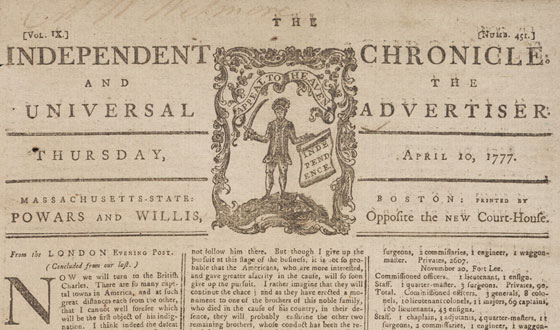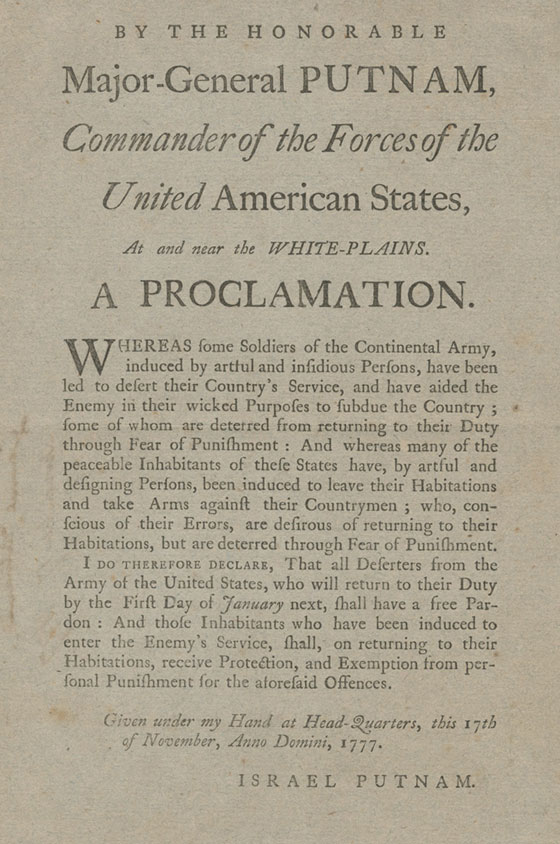William Bradford established the first printing press in New York City in 1693 after he fled persecution in Pennsylvania for printing a seditious broadside the year before. Apart from printing books, the colonial printing press was also used to print pamphlets, business forms, government proclamations, and newspapers. All of these types of printed material were instrumental in the success of the American Revolution, but newspapers and broadsides perhaps most of all.
Newspapers from the colonial period resemble modern newspapers in many ways. They contain local and international news as well as advertisements and even lists of winning lottery numbers. Perhaps the most striking difference is the length of time it took the news to reach the streets. For example, an issue of The Boston Chronicle from November 14, 1768 might contain front page news from London from August 8 of that year. Most of the American newspapers included here were published weekly rather than daily.
view this document in the archives

A broadside is a sheet of paper with printing on one side. Unlike newspapers, broadsides did not appear on a regular schedule but were issued to spread important news and proclamations from a variety of sources. For instance, after the original document was signed in Philadelphia in 1776, the Declaration of Independence was printed as a broadside to be distributed and read throughout the colonies. The example shown here is a broadside announcing that deserters from the US Army will be pardoned if they return to duty.
view this document in the archives

The New-York Historical Society also has an excellent Web site on printing in colonial America, called The Printer and the Revolution.
